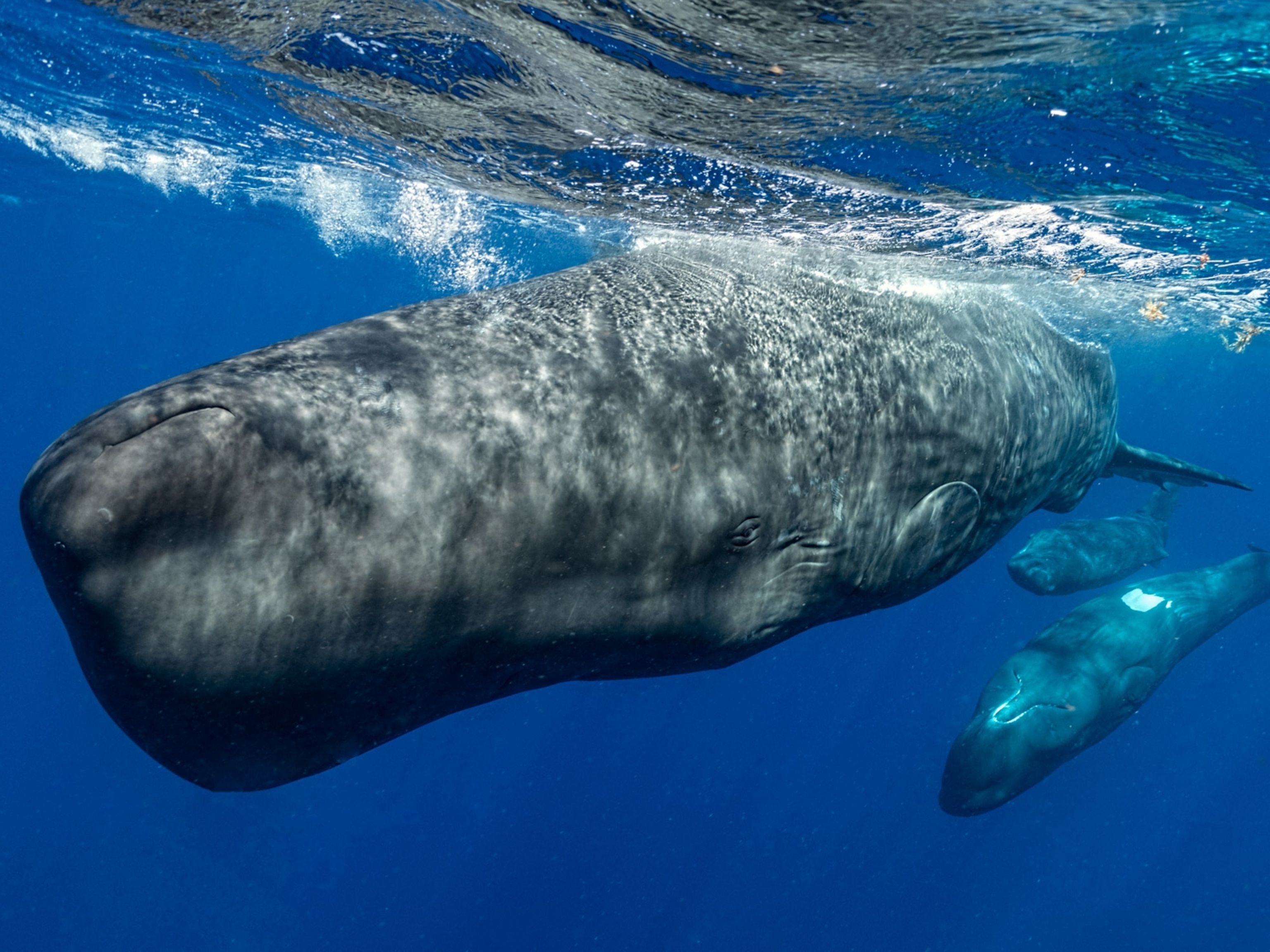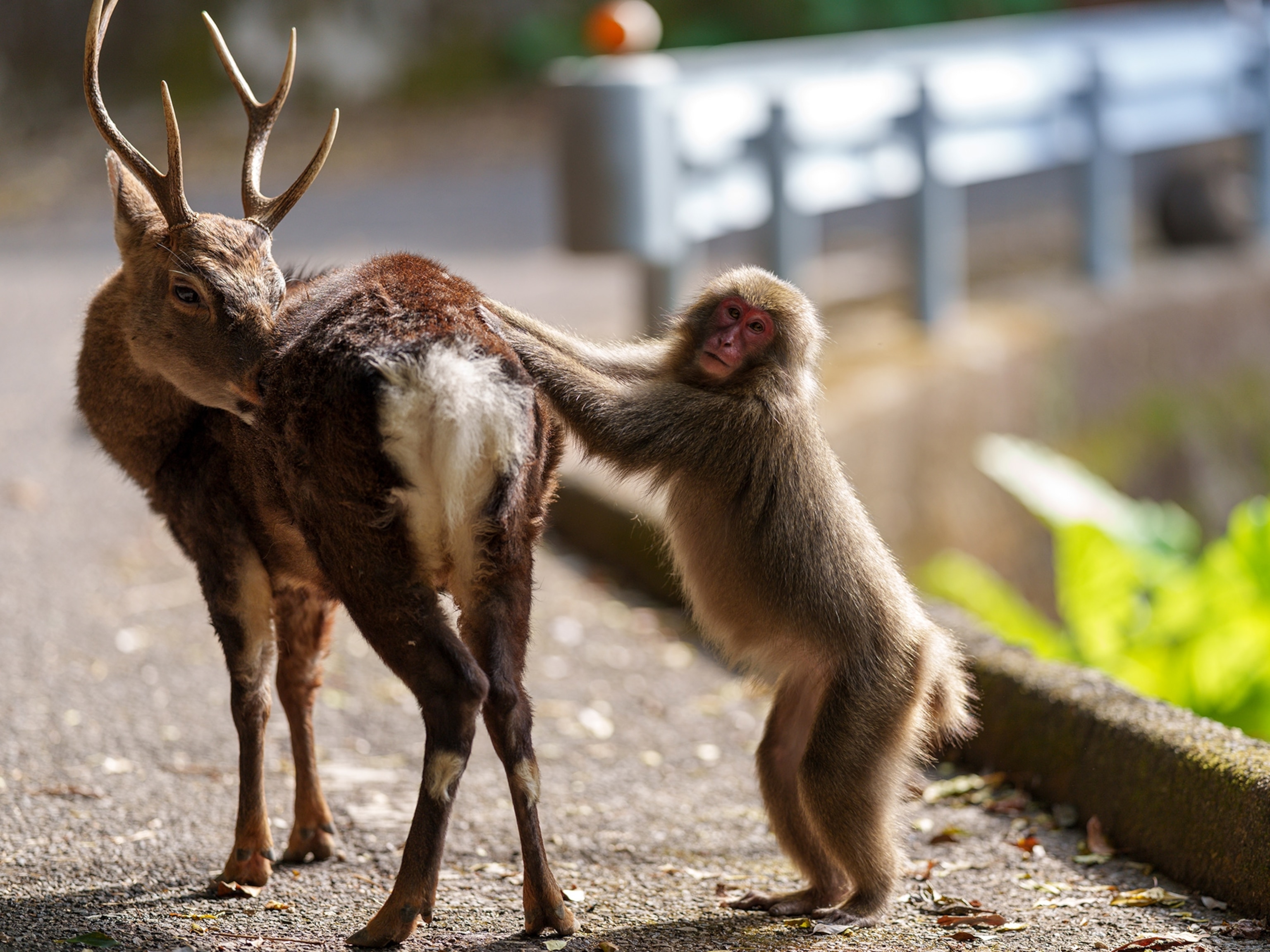These adult male dolphins pee in the air. Scientists have questions.
A new study observed Amazon river dolphins for 218.9 hours and saw males spurt urine into the air 36 times—proof that the behavior is more common than we thought.

The dolphin rolls lazily onto his back, pokes his penis out of the water, and shoots an enthusiastic jet of urine into the air. The stream arcs through the sky like a yellow rainbow.
This bizarre behavior—coined “aerial urination” by experts—has been observed in Amazon river dolphins (Inia geoffrensis), also known as botos. It’s a practice that has both shocked and confused scientists.
Claryana Araújo-Wang, a researcher at Botos do Cerrado Research Project in Brazil and CetAsia Research Group in Canada, and her colleagues recently published a study on the peculiar phenomenon after observing the dolphins for 218.9 hours and seeing males spurt urine into the air 36 times.
“An individual will start to slowly flip belly-up and expose the penis and urinate,” she says in an email. “When another male is present, he may sometimes chase the urine stream with his rostrum.”
(Dolphins can identify their friends by taste.)
Jason Bruck, associate professor at Stephen F. Austin State University, who was not involved in the study, had already heard of the phenomenon. A dolphin expert, Bruck has been giving talks for years that include a slide with an image of the river dolphin participating in this practice. The repeated act puts the study’s observations “on a solid foundation,” says Bruck. “It’s not a one-off.”
Functions of urine in the animal kingdom
Many animals use urine for purposes other than eliminating waste. Lions, tigers, and bears—oh my!—as well as wolves, coyotes, and mice all use urine to mark their territory. Female crayfish, lobsters, and porcupines let males know they’re ready to get it on by peeing, and male tilapia use it to prove their sexual prowess. Monkeys even bathe in urine in hopes the scent will attract a mate.
While most animals can detect the scents from urine, evolution has caused dolphins to lose their sense of smell, so they rely on taste instead.
(This is the role urine plays in porcupine courtship.)
“Any number of cues in mammals are coded chemically,” says Bruck. “It’s we humans who are poor at using chemical communication…our sense of smell is pretty bad.”
Chemical communication through urine in botos
Researchers aren’t entirely sure what’s going on with these Amazon river dolphins, but they speculate that the baffling practice could have a social purpose.
Botos tend to use acoustic cues for general communication, but mating behaviors include male-on-male displays of aggression and even carrying objects like flotsam. “It is possible that aerial urination is another behavior of the males’ social-sexual repertoire,” says Araújo-Wang. She suspects “aerial urination helps in advertising male quality in terms of social position or physical condition.”
So far, only males have been observed peeing on each other, and 67 percent of these occurrences happened when a “receiver” male was nearby.
Bruck, who published two studies in 2022 showing that bottlenose dolphins (Tursiops truncatus) can identify friends through the taste of their urine, wonders if this could indicate a chemical communication system. “We're seeing, perhaps, how river dolphins may do something that we've looked at in bottlenose,” he says.
At this stage, it’s impossible to be sure. The dolphins might use chemical signals to indicate identity, social status, and physical health, or this could be “just a funny thing they do,” says Bruck. To confirm, scientists would need to isolate different variables in controlled experiments. “That’s a very hard thing to do in this species,” he says.
Protecting botos from harm
The study authors believe these findings could be important for efforts to protect endangered botos, and Bruck agrees.
“It is time to start recognizing there is strong evidence [of] chemical communication in cetaceans,” he says. “That may be affected by the things we put in the water.”
If dolphins are using chemical cues to communicate with each other, human pollution could block or mask these signals and affect the future of the species. If we're "dumping stuff in the water [and] they can't figure out the things they need to know to survive and reproduce,” says Bruck, “then that's very bad."





